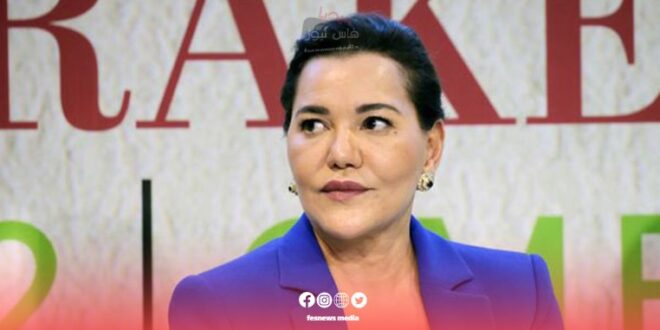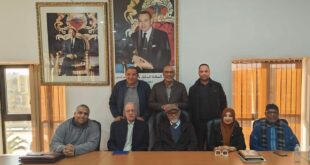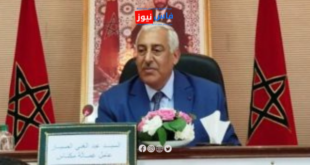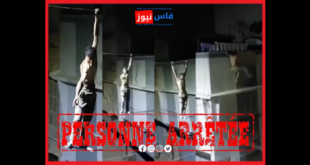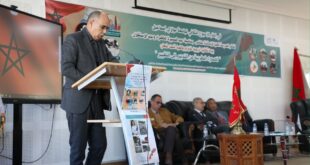Her Royal Highness Princess Lalla Hasnaa, President of the Mohammed VI Foundation for the Protection of the Environment, inaugurated on Tuesday the historic Haboul Park in Meknes, after undergoing renovation works.
On this occasion, HRH Princess Lalla Hasnaa unveiled the commemorative plaque of the park, before giving her highness explanations about the heritage of the main park of Meknes, which has regained its splendour after a complete renovation, coordinated by the Mohammed VI Foundation for the Protection of the Environment in partnership with the urban community of Meknes, the General Directorate of Territorial Collections, the Meknes Municipality, the Regional Council of Fez-Meknes and the National Agency for Water and Forests.
Her Highness was also given explanations about the fountain and the barrage, fountain techniques, an ancient irrigation system in the city, the water lilies leaf pond, bird species in cages, the sports space, the chess space, as well as the modules ‘Water Fountain’, ‘History of Columns’, ‘Ecosystems Puzzle’, ‘Aromatic Plant Systems’, ‘Plant Biodiversity’ and the mobile application of Lahboul Park, which can be accessed at https://jardinlahboul.ma/.
The historic park was founded in 1906. A five-hectare park in the heart of the city, shaded by palms and perennial trees, with magnificent terraces created on the slopes of the Boufakrane valley, giving it the character of a suspended park, it will bring back the pleasure of picnicking and recreation for the people of Meknes.
The last amphitheatre, at the lowest point of the park, 400 metres long, offers a view of the valley through which the water flows.
The rehabilitation of this park, which forms an integrated space and also provides a platform for sporting activities, was carried out in respect of one of the Foundation’s fundamental principles in renovations, including respect for the history of the place and the intentions of the park’s founders, as well as respecting and reinforcing the precise arrangement of the terraces. Their symmetrical alignment rises parallel to the course of the valley and is strikingly reminiscent of the garden plantings of the famous Maudon amphitheatre, along a similar length, built in 1690 by André Le Notre, Louis XIV’s gardener.
This design allows one to enjoy the entire long stretch of the valley while offering a diagonal view of the large landscape and the Saïs plain.
For this magnificent ensemble of the city, which Sultan Moulay Ismail made his capital, the redevelopment included park paths, fountains and ponds, the rehabilitation of open-air terraces, the development of aviaries, and the rehabilitation of plantings, walls and fences.
For the Foundation, parks and gardens remain places of awareness and sensitisation to protect the environment. A pedagogical trail has been created for this purpose.
It consists of information and sensitisation stations whose design was the subject of an ideas competition, launched by the Foundation as part of its mission to raise awareness, sensitise and educate on sustainable development among students of the National School of Architecture of Fez.
This unifying initiative of the Foundation is part of a series to test and evaluate the creative potential of the young students of the National School of Architecture and their engagement in favour of the environment and sustainable development.
More than thirty engineering students have proposed innovative and interactive modular projects to enrich this pedagogical approach.
The modules cover several topics: ‘History of the Park’, ‘History of the Roman Columns’, ‘Water Fountain’, ‘Ecosystem Puzzle’, ‘Aromatic Plant Ecosystems’, ‘Plant Biodiversity’, ‘Canopy’ and ‘Insect Hotel’.
In order to preserve this site of high heritage, cultural and historical value, the Foundation, together with its partners, initiated the designation of Lahboul Park as a national heritage site.
As a reminder, Lahboul Park is the sixth park to be rehabilitated by the Foundation as part of its programme to rehabilitate historic parks and gardens.
The Foundation began this programme in 2005 with the rehabilitation of Arsa Moulay Abdessalam in Marrakech, a magnificent eight-hectare princely garden near the Koutoubia hermitage, then, the following year, the wondrous Bougandil Gardens (2005) with its four hectares of magnificent gardens, Jannat al-Sabil in Fez (2010), a garden created centuries ago, L’Hermitage in Casablanca (2011) with its twelve hectares, and in 2022 the Forest of Youth in Marrakech, a 140-hectare park in the heart of the city.
Since 2007, the Foundation has also overseen a programme to protect and develop Marrakech’s palm gardens.
Upon arrival, HRH Princess Lalla Hasnaa was greeted by Chakib Benmoussa, Minister of National Education, Primary Education and Sports, Leila Benali, Minister of Energy Transition and Sustainable Development, and Mohamed Mehdi Bensaid, Minister of Youth, Culture and Communication.
Also present to greet Her Highness were Mohamed Fawzi, Wali, Secretary General of the Ministry of Interior and Acting Director General of Territorial Collectivities, Said Zniber, Governor of the Fez-Meknes Region, Abdelouahed Ansari, President of the Regional Council, Abdelghani Sabbar, Governor of Meknes, Hicham El Kaid, President of the Meknes Regional Council, Jawad Bahji, President of the Meknes Collective Council, and Ahmed El Ghajaoui, President of the Ismailia Metropolitan Region.
Her Royal Highness Princess Lalla Hasnaa was also greeted by Mr Chekib Lallagh, President of the General Federation of Moroccan Enterprises, Mr Pascal Lopez, landscape architect, Ms Nadia Selak, Director of the National School of Architecture in Fez, as well as several members of the Board of Directors and partners of the Mohammed VI Foundation for the Protection of the Environment.
From the website: Fez News
 فاس نيوز ميديا جريدة الكترونية جهوية تعنى بشؤون و أخبار جهة فاس مكناس – متجددة على مدار الساعة
فاس نيوز ميديا جريدة الكترونية جهوية تعنى بشؤون و أخبار جهة فاس مكناس – متجددة على مدار الساعة

